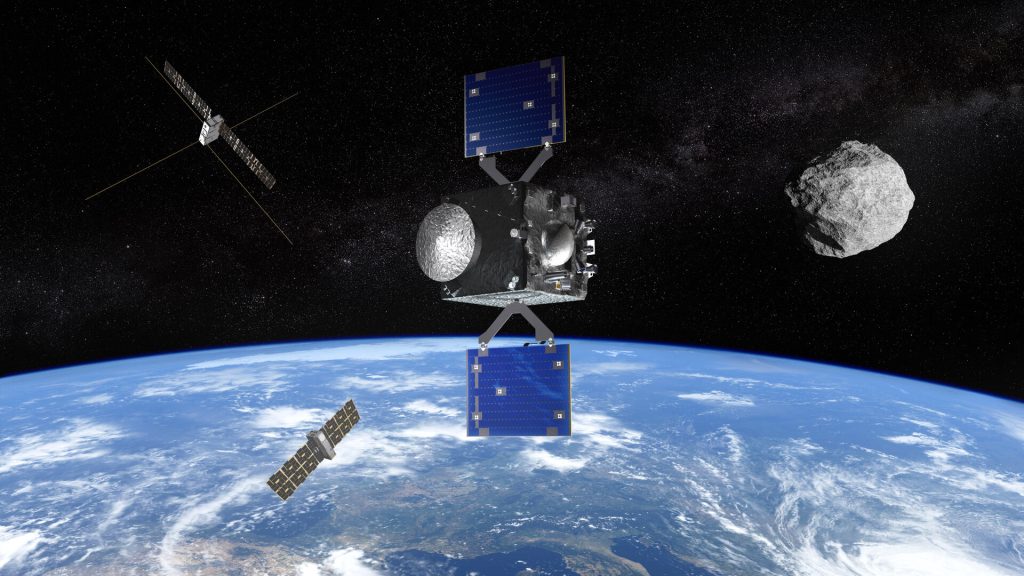July 16, 2024
1320 View
Ten nice
Thirty years ago, on July 16, 1994, astronomers Shoemaker Levy 9 A comet hit Jupiter with incredible force. This event sparked a lot of interest in the field of planetary defense, as people asked, “Can we do something to prevent something like this from happening to Earth?”
Today, ESA Space Safety Program A new step has been taken towards answering this question: the program has received permission to begin preparatory work for its next round. Planetary Defense Mission – Rapid Apophis Mission for Space Safety (Ramses).
Ramses Asteroid 99942 Apophis It will then accompany the asteroid on a safe, close flyby of Earth in 2029. Researchers will study how Earth’s gravity changes the asteroid’s physical properties. Their findings could improve our ability to protect Earth if we find a similar object on a collision course in the future.
Apophis
It is about 375 meters in diameter and is the size of a cruise ship. Asteroid Apophis It will pass within 32,000 km of the Earth’s surface on April 13, 2029. It will be visible to the naked eye for a short time in clear, dark skies by around 2 billion people across Europe, Africa and parts of Asia.
Apophis will pass by Earth, and while astronomers don’t think the asteroid is likely to hit Earth for at least the next 100 years, a flyby of Apophis in April 2029 is an extremely rare natural event.
After analysing the sizes and orbits of all known asteroids, astronomers believe that an object this large would come this close to Earth only once every 5,000 to 10,000 years. By comparison, a total solar eclipse somewhere on Earth occurs roughly once every 18 months, and Halley’s Comet returns to Earth’s sky every 76 years.
The 2029 flyby of Apophis will attract global attention and represent a unique opportunity for science, planetary defense, and public engagement.
Ramses
ESA’s Ramses spacecraft will accompany Apophis before it passes Earth and during the flyby to observe how Earth’s gravity distorts and changes Apophis.
Patrick Michel Research Director CNRS “There is still a lot we don’t know about asteroids, but until now, to study them we had to travel deep into the solar system and carry out experiments ourselves and interact with their surfaces,” said a researcher from the Observatory of the Côte d’Azur in Nice.
“For the first time, nature is bringing it to us and conducting the experiment itself. All we have to do is watch as Apophis is stretched and compressed by strong tidal forces, causing landslides and other disruptions and revealing new material from beneath the surface.”
Ramses needs to be launched in April 2028 so that it can reach Apophis in February 2029, two months before the close approach. To meet this deadline, ESA requested permission to start preparatory work for the mission as soon as possible using existing resources. This permission was granted by the Space Safety Programme Board. The decision on whether to fully commit to the mission will be up to ESA’s Ministerial Council Meeting November 2025.
Using a suite of scientific instruments, the spacecraft will conduct thorough pre- and post-event investigations of the asteroid’s shape, surface, orbit, rotation and orientation. By analyzing how Apophis changes during the flyby, scientists will learn a lot about how the asteroid responds to external forces, its composition, internal structure, cohesiveness, mass, density, porosity, and more.
These are all very important characteristics for evaluating how to most effectively remove a hazardous asteroid from a collision course with Earth. Because asteroids are also time capsules that formed more than 4 billion years ago, data from Ramses will also provide new scientific insights into the formation and evolution of our solar system.
Meanwhile, NASA has redirected the OSIRIS-REx spacecraft to Apophis, due to limitations in orbital mechanics. Osiris – APEX The asteroid is expected to arrive at Apophis about a month after it passes Earth.
“The asteroid’s rotational speed is estimated at 100km, and the asteroid’s rotational speed is estimated at 100km. The …
Rapid Reconnaissance: The Cornerstone of Planetary Defense
NASA’s DART asteroid impact probe and ESA’s Spatula Asteroid detectors show that, in principle, humanity could change the course of an asteroid if necessary. But to deal with a real hazard, we need to be able to rapidly develop and deploy a response.
ESA’s Richard Moisle Planetary Defense Agencyexplains, “Ramses will demonstrate that humanity can deploy a reconnaissance mission to rendezvous with an approaching asteroid in just a few years. Missions of this kind are the linchpin of humanity’s response to hazardous asteroids. Reconnaissance missions will first be launched to analyze the trajectory and structure of the approaching asteroid. The results will be used to determine the best way to redirect the asteroid or rule out the possibility of a collision before expensive deflection missions are developed.”
Paolo Martino, head of ESA’s Ramses mission, added: “The Ramses mission concept reuses much of the technology, expertise, industry and scientific community developed for space exploration. Spatula Mission Hera demonstrated that ESA and European industry can meet tight deadlines, and Ramses will likely follow suit.”


